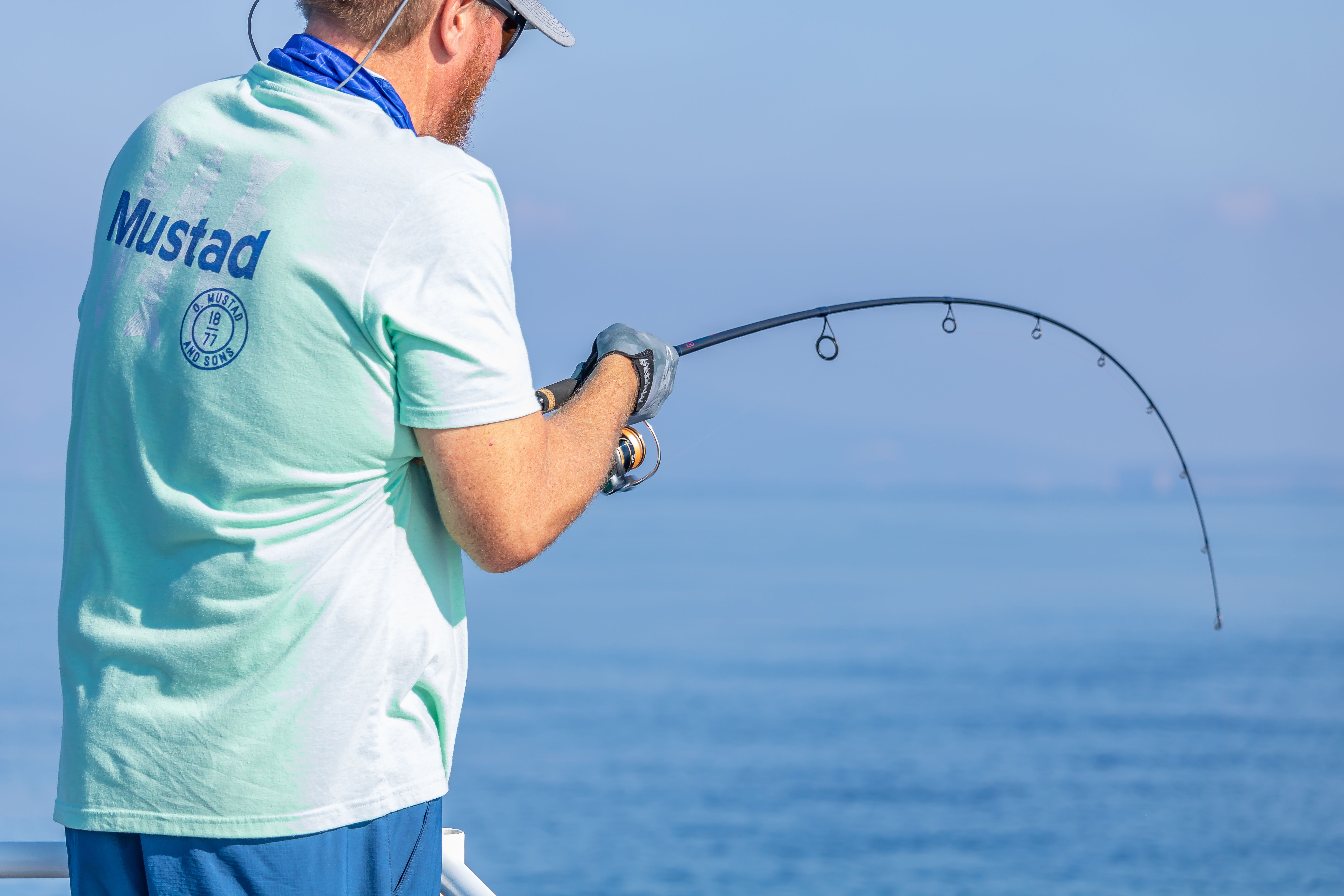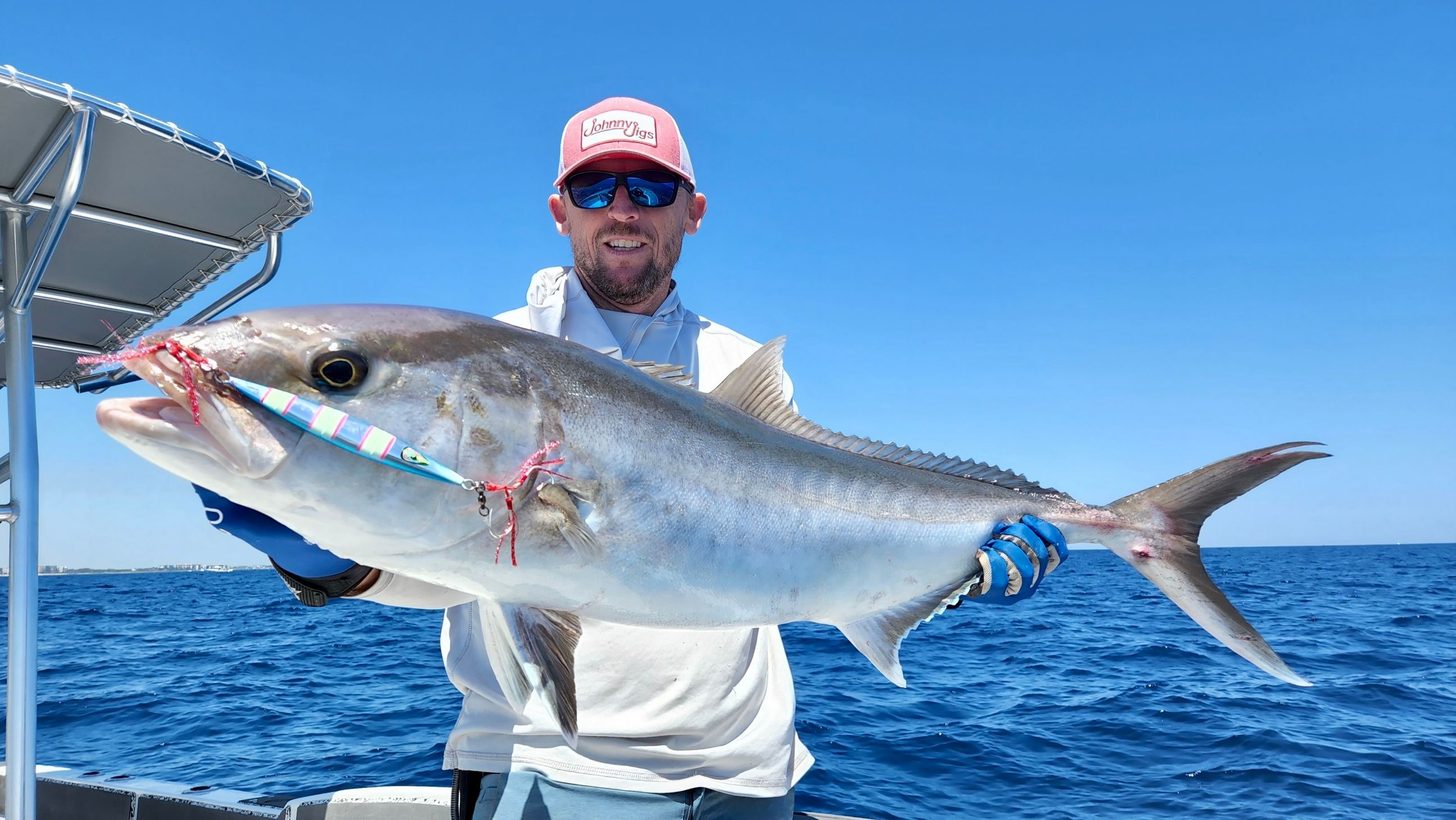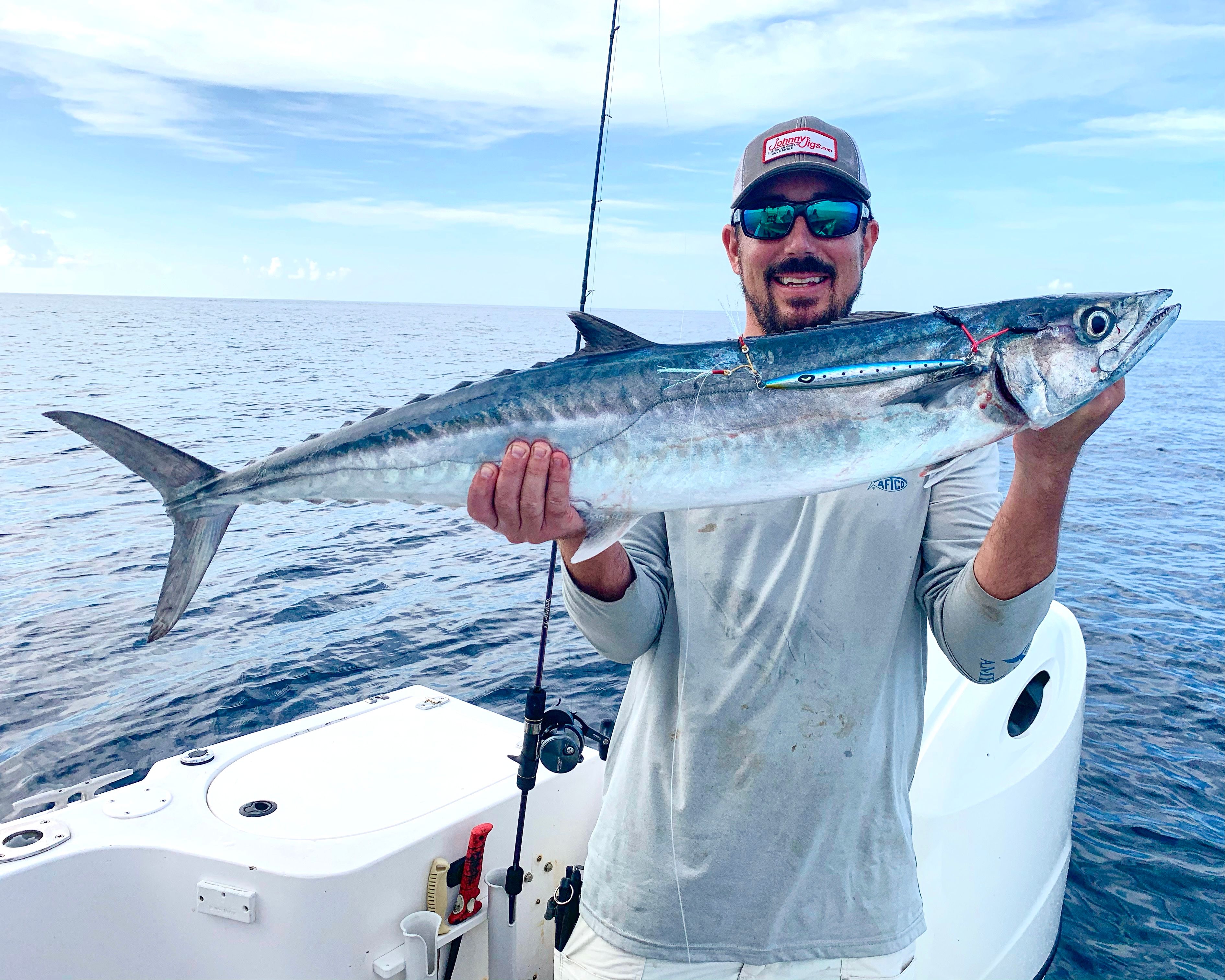GET IN ON THE SLOW PITCH JIG CRAZE

One of the fastest growing techniques in the saltwater fishing world is actually one of the slowest presentations. Slow pitch jigging to be exact.
Originating in Japan, this enticing method has rapidly spread to Australia, Europe and the U.S. Florida’s East Coast, known for its abundance of bottom fish and pelagics — all available throughout much of the year — has seen an explosion of slow pitch interest. Not surprising, given this technique’s broad applicability and diverse appeal.
Johnny Steadham, owner of Johnny’s Jigs and Tackle in Pompano Beach and his partner Chris Doyle fish slow pitch jigs in depths of 20 to 1,000 feet and catch everything from groupers and snappers, to amberjack and cobia, to pelagics like tuna, kingfish, wahoo and sailfish,
Pioneers in the U.S. market, Steadham and Doyle have taken their tactics throughout the East Coast, the Gulf of Mexico and the California coast. Eager to educate anglers on this highly productive technique, they recently shared their insights into this incredibly productive technique.

Facilitating Feeding
Not to be confused with speed jigs, which are designed for aggressive displays, slow pitch jigs are built for subtlety. As Steadham explained, it’s all in the profile.
“A lot of times, speed jigs will be long and symmetrical on both sides,” he said. “They’re designed to move fast through the water to imitate a fleeing baitfish. A slow pitch jig is asymmetrical; it’s designed to imitate a wounded baitfish — an easy meal.”
Doyle adds this: “Typically, one side will be concave and the opposite side will be flat, so that jig will have a natural tendency to fall and flutter on the weighted side.”
The basic presentation: Make a short pitch, lower the rod tip to put slack in the line and allow the jig to fall to it’s side and flutter.
As Doyle notes, slow pitch jigs follow one of two general forms from top to bottom. The jig is either perfectly balanced, so you can place your finger under the center of the jig and hold it evenly on the fulcrum; or it will be center weighted.
“Being balanced or center weighted will allow this jig to fall horizontally under no tension,” Doyle said. “Its shape gives it the action.”
Sea conditions often dictate the specific jig shape, as a broader slow pitch jig will descend more slowly than a narrow one. Steadham calls this a critical point, as success requires a vertical presentation.
“The best way I can explain it is this: If you tie a jig to a piece of line and you’re holding it in your hand and you start bouncing it up and down, you can get great movement because of your tight, vertical connection,” he said. “But if you take that jig, put it across the room and then hold the line in your hand and (work) it, you’re not going to be able to move it the way you could when it was straight up and down.”

Tackle Up
As Doyle noted, slow pitch jigging can be as simple as tying a jig onto whatever rod/reel outfit you’re using. However, maximizing this technique requires a balanced tackle system to create the specific action that entices big fish to bite.
“Using the right rod and reel will allow you to more effectively deliver the pitches and the flutters, it’s going to give you more control, it’s going to be more comfortable and, ultimately, it’s going to be a lot less work,” Doyle said. “The rod and the reel work together, but the rod is a tool to pitch and (work) the jig. The reel is the tool to fight the fish.”
Doyle admits this premise counters the typical instruction of fighting a fish by pumping up with the rod and then reeling down. However, with practice and the right setup, anglers will become accustomed to keeping the rod pointed downward, maintaining a tight connection and then reeling at a pace that puts maximum pressure on the fish.
“Steadham adds: “At the end of the day, if you’re fishing 20 pounds of drag, it’s still 20-pounds of drag.”
Rod: A 6- to 6 1/2-foot rod with a flexible tip will impart the right action, while a butt section with an exposed blank or tapered EVA foam facilitates the proper posture of tucking the rod against your forearm. Ideal for this technique, the Mustad G-Series Slow Fall Jigging Rod comes in 6-foot, 6-3 and 6-4 models.
Reel: Since slow pitch jigging is an active technique, a light, narrow body conventional reel with high line capacity is the way to go. As Doyle explains, you want a reel you can cup with your hand and level wind, while tucking the rod butt under your arm.
Steadham suggests a high speed reel gathering 40 inches of line per crank for beginners, while advanced anglers may want more power gearing with a reel that gets 36 inches per crank. Around heavy cover, like the drilling rigs of the Northern Gulf of Mexico, a power reel helps manage the fish and prevent entanglement.
Line: The zero stretch and ultra-sensitive nature of braided line, like TUFLINE’S Ocean SPJ, helps you maintain contact with your jig during the vertical presentations. Recommending about 10 feet of fluorocarbon leader, Doyle said the rule of thumb is to increase leader size 10 pounds over braided main line strength (relevant to depth).
The fluorocarbon leader provides abrasion resistance for fish hooked around reefs, wrecks or rock piles, Doyle connects his line and leader with a PR knot or FG knot, both of which fit through the small guides of the slow pitch jig rod.

Presentation Pointers
Slow pitch jigs are made with top and bottom rings for free-swinging assist hook harnesses like the Mustad Slow Pitch Double Assist Rig. Sometimes, the situation calls for double assist hooks; other times, singles are best. In any case, Doyle stresses the importance of consistency — always match the top and bottom.
“Once we start sliding out into deeper water — 400 feet or more — we shift to single assist hooks,” Doyle said. “That’s to try and eliminate the risk of strange things happening like the twin hooks twisting together.
“Also, we believe that in deeper water, single hooks can potentially deliver a better hook set than two hooks both penetrating the fish at the same time. One hook could affect how the other hook sets into the fish. So, we try to make sure our hook sets are as sound as possible to minimize the chance of snagging the fish.”
Slow pitch jigging is a technique whose mastery comes only through repetition. To understand the right combination or rod movements and short reel bursts, you just have to acquire the feel for how the bait moves and how the tackle influences that movement.
“It starts to become like an artist stroking a canvas with a paint brush,” Doyle said. “You have a big range of motion, you can change your rhythm and we always like to say: ‘Connect with the jig.’
“Slow pitch jigging is so fun because it’s such a game of connection and sensitivity. When you get that first strike, you’re the one that’s hooked.”